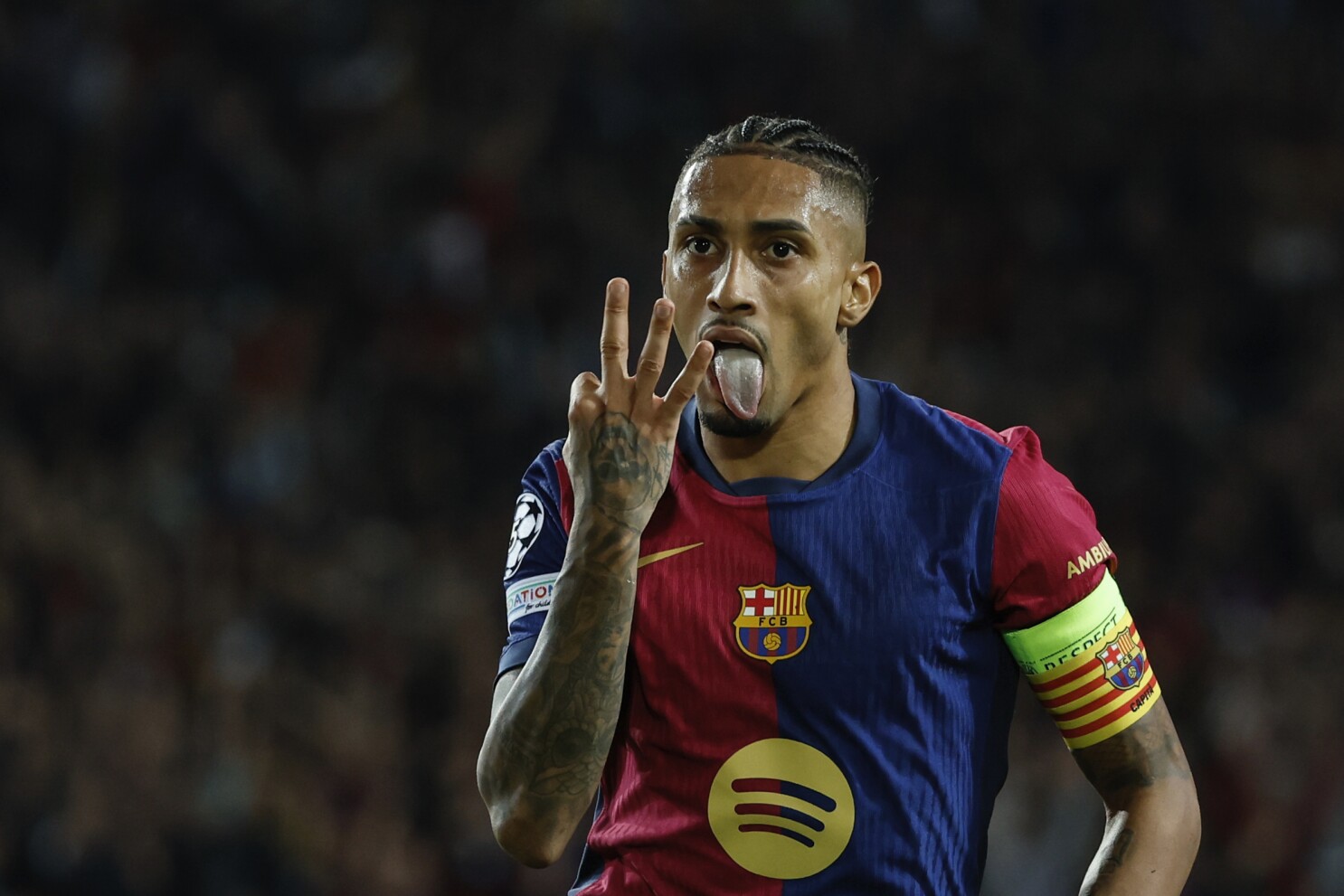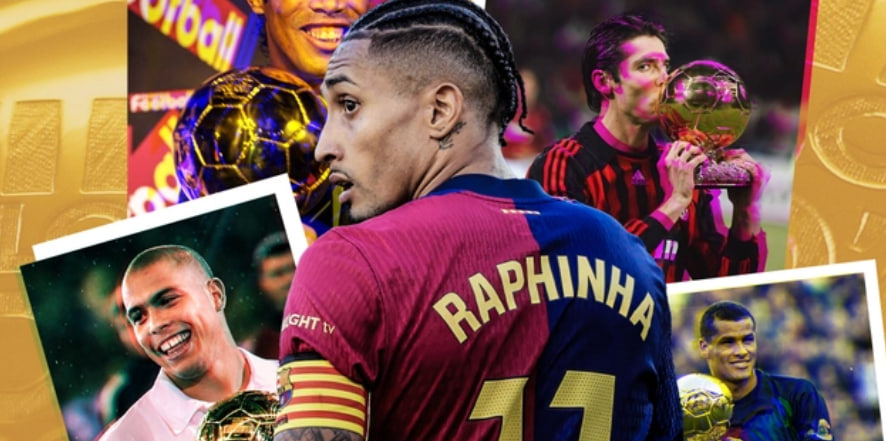When Rafinha joined Barcelona for 58 million euros, many people didn’t think much of the transfer. Some thought he was too expensive, others thought he was just another “risky investment from Brazil”. But now, two years later, he has proved his worth with practical actions. This season he scored 13 league goals and was directly involved in 21 goals, a career high. He is no longer the role player who can only run on the sidelines, but has become an important centerpiece of the team’s offensive end.
This transformation may seem like a sudden burst, but there are actually many reasons behind it. We can look at a few aspects to understand how he has grown step by step.

1. Technical progress: not just good form, but getting smarter
The reason why Rafinha’s performance is so bright this season is not because of good luck or a sudden improvement in form, but he has made obvious progress in both technique and awareness.
Let’s look at some data comparisons. When he used to play in the Premier League, he used to deliver about 1.6 key passes per game; but now in La Liga, that number has risen to 2.7, which is in the top 3% of players in the same position. And his pass success rate has also improved, going from 28% to 39%. This shows that he’s no longer just blindly sending the ball into the box, but has learned how to find his teammates more accurately.
Then look at his shooting efficiency. Whereas he used to average 1.8 shots on goal per 90 minutes, that number is now up to 2.4, and he’s also 19% more likely to score with each shot. These numbers tell us that he’s not only shooting more, he’s shooting more accurately.
Behind this improvement is his ability to run without the ball. He is now in the box more often, with over 68% of his goals being scored by grabbing the ball near the penalty area. This shows that he understands the tactical thinking of Coach Xavi – the so-called “pseudo-nine” style of play, so that the wingers instead of the traditional center forward to complete a lot of offensive tasks.
2. Adapting to the system: becoming an integral part of Xavi’s tactics
Barcelona’s overall style of play has changed this season, and they have begun to reduce their reliance on traditional centers. This gave Rafinha a great opportunity to play a more important role on the field.
Although he is nominally a right winger, he is actually more of a “free attacker” in the game. For example, when Lewandowski pulls back to meet the center of the field, he will quickly step in and become the second striker; and when midfielder Gavi pushes forward, he will pull back a little bit to help the team to maintain the possession and link with the side.
This flexible approach allows him to cover almost all areas of the right side of the pitch. The stats show that he touches the ball in a wide range of positions per game, in almost all attacking areas on the right side (think of it as a heat map).
In addition to this, he also plays the role of “pacemaker”. Simply put, he can change the tempo of the game quickly with his dribbles or long passes when the team is not in possession. According to statistics, he can complete 5.2 forward passes per 90 minutes, 43% more than last season. This is a very important addition for Barcelona, whose midfield strength is currently declining.
3, the new standard of modern wingers: can run, can control, can think
Rafinha’s growth trajectory, in fact, is also the direction of the development of many excellent wingers. They are no longer just rely on speed and breakthrough to eat the “blast type players”, but need to have more comprehensive ability.
The first is a stronger sense of space. Although he now runs 16% less often than before, he has a more purposeful approach to every sprint. For example, within 3 seconds of getting the ball, he has a 48% chance of completing a shot or assist. This shows that he knows better when to accelerate and when to stop and observe.
The next thing is the physical playmaking ability has improved. He still holds the record of averaging 2.1 successful crosses per game, but his success rate against the body has increased from 43% to 52%. This is due to his increased strength training, as well as a marked improvement in controlling his center of gravity.
Most importantly, he has become more calm and sensible. Whereas he used to concede the ball an average of 4.7 times per 90 minutes, that number is now down to 3.1. And he’s doing a much better job of selecting passes in key areas, getting 78% of them correct. This means that he is no longer a player who relies only on his individual ability to do things alone, but a “cerebral” winger who can make sound decisions in complex situations.
4. Challenge for the future: How long can he keep playing like this?
Although Rafinha is doing very well now, we must also see some potential problems.
First of all, he runs a lot, averaging 11.2 kilometers per game, which is one of the highest among La Liga wingers. Such a high intensity pace of play could put a strain on his fitness if he encounters an intensive fixture schedule.
Secondly, he relies too much on his left foot. Statistically, 87% of his shots and passes are done with his left foot. While this reflects his excellent left-foot technique, it is also easy for opponents to target the defense.
Therefore, for Barcelona, if they want him to continue to play at a high level, they may need to make some adjustments to their rotation and tactical design, such as giving him more rest time, or developing his right-footed ability to increase the diversity of attacking means.
Summary: From fringe player to tactical centerpiece
Looking back on Rafinha’s career, he has gone through a very typical transformation process from being a solo player during his Leeds United days to becoming a key player in Barcelona’s attacking system. He has not given up his original strengths, such as speed and dribbling, but in the process of integrating into the team’s system, he has also continued to improve his ability to read the game and sense of teamwork.
This kind of growth path of “retaining individuality while obeying the whole” may become a new way of thinking for future luxury teams to cultivate wingers. In this era where everyone is looking for the next “Neymar”, Rafinha used his own efforts and wisdom to come out of his own way.
He is not a gifted genius, but he is a player who keeps learning and improving. It is this pragmatic attitude, so that he has found his own position in Barcelona, but also let the fans see the hope again.
